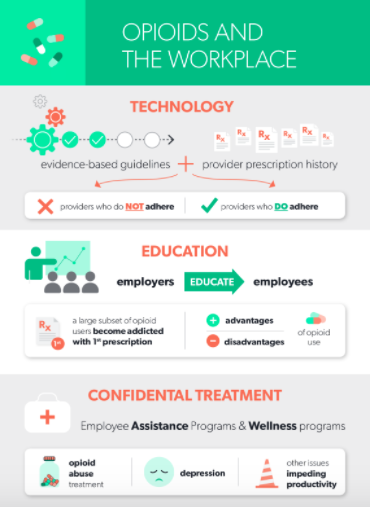Insurers should aspire to give their agents and brokers superpowers. Superpowers? Think of the impact of speech-to-speech language translators that free you from having to learn foreign languages. Of GPS car navigators helping you find your way without knowing your way. Or of 3-D printers that enable consumers to produce their own products. Those kind of superpowers. Insurers can deploy technology to empower agents and brokers much more, leading to an even better experience and performance. For instance, by combining and integrating robo-adviser systems with human agents and brokers, insurers can deliver better conversations and higher customer satisfaction, which result in better advice and higher conversion rates. A hybrid model. The best of both world.
Connecting online customers with offline brokers and agents
Digitization changed the way people research and purchase products. More and more comparison sites enable customers to check prices and services with just a few clicks. Consequently, agents and brokers need to adapt. Yesterday’s tactics become less and less effective, in particular in view of ever increasing customer expectations. But complex insurance products still need extensive explanation, and trust in the insurer. This is where the human factor comes into play. In Germany, for instance, 59 percent of all insurances are researched online, but purchased offline (ROPO), according to a survey by Google and Zurich in 2016. For high value and complex insurance and finance products like health, mortgage and pension insurances, the ROPO share accounts for more than 75 percent of all sales.
Best of both worlds
The past decade has taught us that insurers need to manage the feelings side of their relationship with customers much better. But with new technologies primarily being used to digitize processes, insurers are in danger to become even less human.
Humans inject emotion, empathy, passion, creativity, they are able to smile and surprise, and can deviate from the procedure if needed, which algorithmic systems are unlikely to do at this stage. They have the ability to be kind, honest, friendly, generous, giving; someone who makes time for me, listens to me, keeps promises, goes the extra mile. These talents are essential parts of successful customer engagement. We believe that insurers should create the best of both worlds. By leveraging the latest technologies insurers can create smarter agents and empowered brokers.
See also: Insurtech: How to Keep Insurance Relevant
Agent and broker empowerment
In this DIA Summer Read we included six insurtechs that insurers should team up with to revamp this channel. Each of these insurtechs supports the agent or broker in different stages of the primary process:
1. LifeDrip offers state of the art automated marketing tools to agents and brokers.
2. Predictivebid built building an advanced AI platform for online customer acquisition.
3. Finanzen.de created an online marketplace for leads.
4. Virado puts the insurance broker back in the middle with an on-demand offer for millennials.
5. RiskAPP allows agents and brokers to seamlessly collect data for risk analysis.
6. Figlo facilitates the conversation between brokers/agents and customers.
These six insurtechs have in common that they all give superpowers to agents and brokers. They give access to capabilities that used to be exclusive to large corporations. With the solutions offered by these insurtechs agents and brokers can move to a next level.
Next generation brokers
We also notice a new kind of broker emerging that taps into the needs of consumers and insurance carriers alike, leveraging to the max what digital has to offer. We included four of them in this DIA Summer Read:
7. Knip: the personal digital insurance manager.
8. SPIXII: an insurance chatbot designed to speak to consumers just as a person would.
9. Bought By Many: grouping together people with a special similar insurance need.
10. PolicyGenius: reveals the gaps and overlaps in your policies.
DIA Munich
Expect DIA Munich (15 and 16 November) to pay ample attention to insurtechs that make smart agents and power brokers.
Agent and Broker Empowerment
1. LifeDrip: The future of life insurance agent’s sales software
The world is going mobile but most insurance brokers and agents still use ‘old’ marketing methods to generate leads. It is time for something new and something smarter.
LifeDrip, launched by the Seattle based software company Xeddy, is a turnkey, fully automated mobile marketing system exclusively built for the life insurance agent. It provides monthly, custom branded email newsletters and an exclusive agent website for generating client reviews and feedback.
LifeDrip captures the fastest growing form of lead exposure, including Facebook, Google+, Twitter and LinkedIn. It is done automatically and the contacts and the database are continuously synced. Agents don’t even have to think about it. LifeDrip offers a new way to generate leads at a fraction of the cost. The SEO website is registered with Google and built with responsive code so it is viewable on any mobile device. To maximize Social Media marketing exposure all the required content for Social Media Marketing and Email Newsletters is automatically generated and customized specific to the agent’s sales specialties. The Recommendation Engine generates dozens of powerful and real client recommendations. SplashTriggers notifies instantaneously when a prospect is ready to be contacted for the sale and what to sell them.
Read more: http://bit.ly/2vniEFD
Check demo: http://bit.ly/2irgVOG
2. Predictivebid: the bidding platform of the future for insurance
Predictivebid is a Tel-Aviv based tech company, building the most advanced AI platform for online customer acquisition through Search & Social campaigns based on Life Time Value Measurements. They excel in lead generation campaigns, lead quality analysis and lead potential scoring, thereby optimizing the lead process and helping companies lower their acquisition cost by providing higher quality leads with better life-time-value metrics. Predictivebid bridges the gap between online and offline, helping insurers capture consumers online and then directing them to book a meeting with their nearest and most relevant agents. The AI platform connects and tracks potential customers to the right agent nearest to them, based on their location and needs. A costumer can schedule a meeting with an agent, chat with an agent or even send his details so the agent can call him back.
Read more: http://bit.ly/2vdced1
Check demo: http://bit.ly/2wmpXC7
3. Finanzen.de: the marketplace for leads
Finanzen.de, located in Berlin, Paris, Zurich and Bristol, connects lead generators such as online price comparison sites with lead buyers such as independent financial advisers and insurance companies. More than 800,000 leads are annually traded via its industry leading technology platform, using real time auctions and real time lead delivery. The company also acts as an online broker for P&C insurance products. Thanks to its scalable business model, finanzen.de is ideally positioned to benefit from the digital shift occurring in the European insurance and banking domain and to capture the significant market potential ahead.
Founded in 2004, Finanzen.de is one of the oldest and at the same time one of the most successful InsurTech companies. Finanzen.de generates about one million online leads per year for more than 20,000 insurance experts and financial consultants. Finanzen.de informs consumers about insurance and finance topics and offers interested customers free access to the best possible advice. In the search for suitable offers, visitors can perform neutral tariff comparisons. If they find a suitable offer they can close a contract directly online or receive advice from audited and evaluated experts.
Read more: http://bit.ly/2nZAR9C
Check demo: http://bit.ly/2xrmr6j
4. Virado: One app. 250 niche product insurances for Millennials
German tech startup Virado is successfully creating new sources of income for insurance brokers. By offering 250 insurance products, mainly for niche policies on one platform. Targetting German Millennials. For example, insurance for an apartment share, DJ-equipment, or a travel backpack. These kind of products were not available for the insurance broker due to high connection and transaction costs of the insurer. The Virado all in one app for smartphones and tablet is based on Virado technology. The on-demand platform offers insurance brokers structured access to all insurances. Easy. Fast. Free.
Virado puts the insurance broker back in the middle. Millennials do not use a traditional insurance broker. They go online to find an insurance solution to fit their lifestyle. The on-demand platform Virado puts the insurance broker back in the middle by giving him the opportunity to not only protect but also to create new sources of income by serving the Millennials with insurance products they need. ‘On the spot’ insurance products will significantly increase the customer’s loyalty and customer lifetime. The tech startup offers also digital business expertise and the app is suitable for the insurance brokers homepage and its own social media channels.
Virado is completely free of charge and user-friendly. All the insurance broker needs to do is download the app and register.
Read more: http://bit.ly/2w23mbh
Check demo: http://bit.ly/2wmAGg5
5. RiskAPP: Risk assessment by agents and brokers
RiskAPP is a new Risk Assessment tool created to assist insurers globally. RiskAPP is a unique platform for structured data collection and integrated risk assessment. RiskAPP helps insurers to use captured data from their prospects and clients to sell and underwrite the risks wisely and profitably. The RiskAPP is a complete Risk Assessment tool for the insurer that wants to win his challenges.
RiskAPP delivers the most complete risk assessment possible. Through the platform the insurer can offer the most remunerative coverage program giving safety and peace of mind to insurance clients and the insurance carriers. The sales process is now smooth and seamless.
When the broker has the first meeting with a prospect, the RiskAPP data collection helps the broker to engage the client. The process follows with the technical inspection where the loss preventionist gathers further technical data that clearly describes the company. RiskAPP, thanks to its proprietary algorithm, processes the data collected and elaborates a detailed report included with automated loss protection recommendations. The insurer now has access to the most complete risk profile of the insured. RiskAPP enables analytics, portfolio management and helps in increasing the efficiency of risk selection.
Read more: http://bit.ly/2wDxoon
Check demo: http://bit.ly/2vnQtX4
6. Figlo: facilitating the conversation with customers
AEGON Turkey uses the Figlo platform to facilitate the conversation between brokers/agents and customers. A tablet app guides the complete conversation and gives a quick and tailored overview of the customer’s financial situation to select suitable products based on the client’s risk profile, to cover possible shortfalls. Uğur Tozşekerli, CEO AEGON Turkey: “Customer interaction and involvement as well as the possibilities for illustration and demonstration of the product benefits dramatically increased. From a customer point of view, using the app leads to better and more understandable advice, focus on the real customer needs and on top of that faster service. Straight through processing results in more efficiency and speed of delivery. Apart from a significant improvement of conversion rates the deal size increased between 10 to 45%, depending on the product category. At the same time the operational costs decreased by 18% due to decrease in rework and paperwork. The ROI was already positive in the first year of deployment.”
Quote is from our new book ‘
Reinventing Customer Engagement’
Next Generation Brokers
7. Knip: The personal digital insurance manager
Knip is a ‘mobile-first’ digital insurance broker with a simple and transparent solution to insurance; bundling all the customers’ insurance products into one app. Even if these products are from different insurers. An easy-to-understand overview shows existing insurance policies, tariffs and services. One click opens an entire insurance policy. So the important information is always at hand. After an automatic analysis, new customers receive individual recommendations based on their existing insurance portfolio. Upon request, the Knip insurance experts offer professional consulting, analyze tariffs and services and detect individual savings and optimization potential. As the consultants receive a fixed salary and no commission whatsoever, they can provide independent and honest insurance advice. The app is designed to automatically detect individual’s insurance gaps and recommend essential insurance. Knip allows users to change their tariffs, close new insurance contracts and cancel old policies with a simple click.
Read more: http://bit.ly/2wxi65i
Check demo: http://bit.ly/2vXA7YK
See also: What Incumbents Can Teach Insurtechs
8. SPIXII: Making insurance simple, accessible and personal for everyone
London based startup SPIXII is on a mission to make insurance simple, accessible and personal. It starts by redesigning the way people buy insurance. SPIXII, named after a family of Brazilian parrots that spell out the co-founder’s names, has almost entirely done away with the human component of selling insurance. It is an automated insurance agent, a chatbot accessible via messaging platforms or via a native mobile app. Its app creates a WhatsApp-like chat on a smartphone where a robot will ask simple questions and figure out what the user needs. Built on principles of neuro-economics and the integration of user data with contextual data from multiple sources, SPIXII is an insurance chatbot designed to speak to consumers just as a person would.
Read more: http://bit.ly/2xrFfT9
Check demo: http://bit.ly/2sxsubF
9. Bought By Many: grouping together people with a special similar insurance need
Bought By Many uses a combination of search engine optimization and social media to group together people who have similar insurance needs --such as diabetic travelers, pug owners or homeowners in flood risks areas. They present that group’s requirement to the insurance industry and negotiate on behalf of the group to bring them a better deal than they can get on their own. A better deal might be better pricing, it might be more tailored benefits, or it might be both. Once they bring the offer back to the group, individuals buy directly from the insurer on the better terms that Bought By Many negotiated for them. Creating a win-win for everyone. Insurers only write the risks that they want and members of Bought By Many get a better deal.
The company finds niche groups by looking at Google search data to see which niches have high volumes of search queries. There is also a data entry box on its website letting people submit their own policy ideas. They then validate those segments through social media and engaging with niche blogs, Facebook groups and other stakeholders. The site makes it easy for users to use social media and invite friends to join via Facebook, Linkedin, Twitter and the like. Having established the market, the company works out the group's specific requirements and then approaches the insurance companies to negotiate a deal on a policy.
Bought By Many suggests to insurers to split the usual broker fee in three parts: one third for the Bought By Many members to get a better benefit, one third for Bought By Many and one third for the insurance company, because Bought By Many want you to want to do this business.
Read more: http://bit.ly/2wmz8CB
Check DIA keynote CEO Steven Mendel: http://bit.ly/2v4hvrz
10. PolicyGenius: revealing the gaps and overlaps in policies
PolicyGenius for instance addresses the uncertainty of consumers with regard to gaps and overlaps in the various policies they have purchased over time. PolicyGenius offers a highly tailored insurance check-up platform, where consumers can discover their coverage gaps and review solutions for their exact needs. PolicyGenius’ online store includes solutions from life and long-term disability to pet insurance. Quoting engines offer side-by-side comparisons of tailored policies. PolicyGenius is backed by AXA Strategic Ventures and AEGON’s Transamerica Ventures. What would happen if AXA and AEGON would open up the PolicyGenius platform to all its brokers and agents in all countries she has a presence?
Read more in our new book
‘Reinventing Customer Engagement’.























